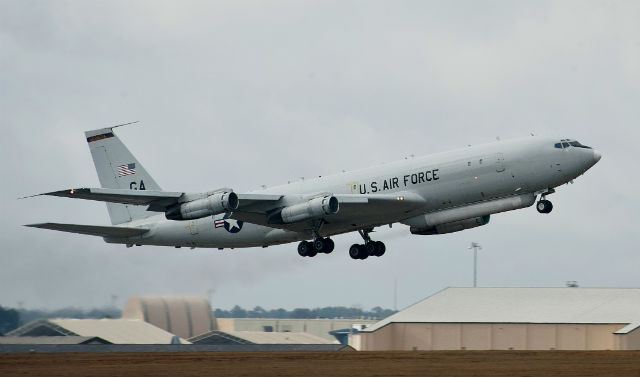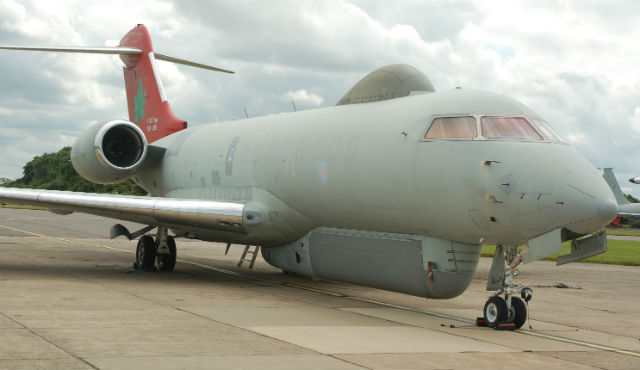Replacing the Northrop Grumman E-8C JSTARS fleet could require an aircraft with a 10-13 person crew and a 3.96m-6.1m-long (13-20ft) radar array, according to newly-released US Air Force briefing documents.
The USAF earlier this year announced plans to acquire an E-8C replacement with an aircraft in the business jet class that could achieve an initial operational capability in 2022. A host of potential bidders – including Boeing, Bombardier and Gulfstream – attended an industry day hosted by the service on 8 April.
The contents of the briefings were initially withheld from public view, as the USAF claimed they were pre-decisional. Indeed, the briefings to potential bidders were held before the air force obtained a validated requirement and approval to launch a programme of record.
For unexplained reasons, however, the air force posted the industry day presentations on a federal acquisition web site on 13 May, with each slide stamped “notional”. The documents reveal that the replacement for the air force’s airborne system for detecting ground targets and managing air strikes could require a relatively large platform, compared to most business jets.

US Air Force
Although a 13-strong crew with a 6.1m radar array is a reduction from the 18-member team and 7.3m array on the Boeing 707-based E-8C (above), the staffing and sensor requirements for the new system could make it challenging to accommodate in a typical business jet.
By comparison, the Raytheon Sentinel R1 delivered to the UK Royal Air Force (below) – and based on the Bombardier Global Express business jet – can seat a crew of five.

Craig Hoyle/Flightglobal
The capabilities sought by the USAF compare more closely to the cancelled Northrop E-10A multi-sensor command and control aircraft (MC2A), which was the original planned replacement for the E-8C and based on the Boeing 767-400ER. The E-10A included a 16-person aircrew and a 6.1m sensor for wide area surveillance – the Northrop/Raytheon multi-platform radar technology insertion programme (MP-RTIP) sensor.
Boeing has developed a business jet version of the next-generation 737 family. A highly modified variant of the BBJ2, in fact, is the basis for the US Navy’s P-8A Poseidon, which performs a similar role for maritime and littoral targets. Airbus also has adapted the A320 into the Airbus Corporate Jet, but company officials were not listed on the attendance roster for the industry day.
Despite still lacking a validated requirement, the briefing documents show that the USAF plans to complete the acquisition process quickly, with a contract award scheduled in less than three years; at the end of fiscal year 2016.
The pace of the acquisition process is driven partly by fears of budgetary poaching by other programmes, according to briefing slides attributed to Col Scott Owens, of the theatre battle control division at the air force lifecycle management centre.
The air force was forced to eliminate one JSTARS 'orbit' to comply with budget cuts imposed by sequestration, and now the service must acquire a replacement before future funding for the lost orbit is “used by other programmes”, the Owens presentation reads.
Replacing the ageing E-8C with a new aircraft avoids a nearly $11 billion operations and sustainment bill needed to keep the aircraft relevant and airworthy, Owens says.
Source: FlightGlobal.com



















